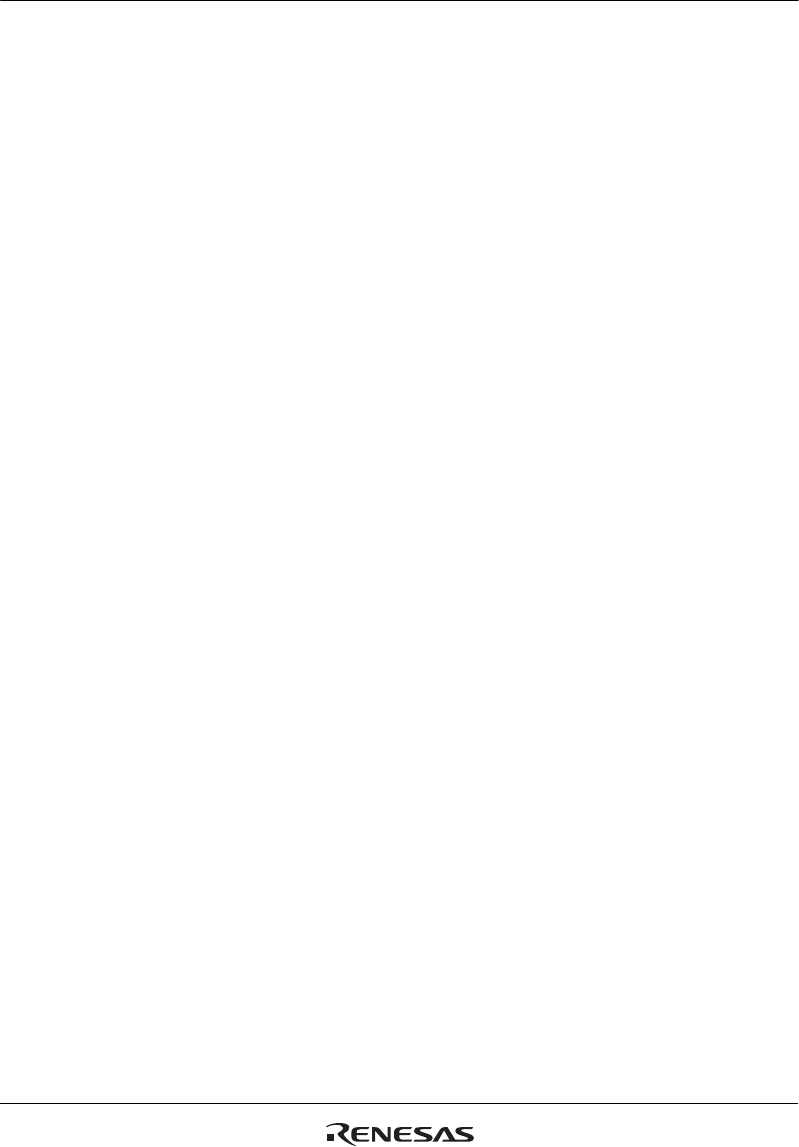
Section 26 USB 2.0 Host/Function Module
R01UH0134EJ0400 Rev. 4.00 Page 1495 of 2108
Sep 24, 2014
SH7262 Group, SH7264 Group
(5) Control Transfer Stage Transition Interrupt (Function Controller Function)
Figure 26.7 shows a diagram of how this module handles the control transfer stage transition. This
module controls the control transfer sequence and generates control transfer stage transition
interrupts. Control transfer stage transition interrupts can be enabled or disabled individually using
INTENB0. The transfer stage that made a transition can be confirmed using the CTSQ bit in
INTSTS0.
The control transfer stage transition interrupts are generated only when the function controller
function is selected.
The control transfer sequence errors are described below. If an error occurs, the PID bit in
DCPCTR is set to B'1x (STALL).
(a) During control read transfers
At the IN token of the data stage, an OUT or PING token is received when there have been
no data transfers at all.
An IN token is received at the status stage
A packet is received at the status stage for which the data packet is DATAPID = DATA0
(b) During control write transfers
At the OUT token of the data stage, an IN token is received when there have been no ACK
response at all
A packet is received at the data stage for which the first data packet is DATAPID =
DATA0
At the status stage, an OUT or PING token is received
(c) During no-data control transfers
At the status stage, an OUT or PING token is received
At the control write transfer stage, if the number of receive data exceeds the wLength value of the
USB request, it cannot be recognized as a control transfer sequence error. At the control read
transfer status stage, packets other than zero-length packets are received by an ACK response and
the transfer ends normally.
When a CTRT interrupt occurs in response to a sequence error, the CTSQ = 110 value is retained
until CTRT = 0 is written from the system (the interrupt status is cleared). Therefore, while CTSQ
= 110 is being held, the CTRT interrupt that ends the setup stage will not be generated even if a
new USB request is received. (The USB 2.0 host/function module retains the setting of the CTSQ


















